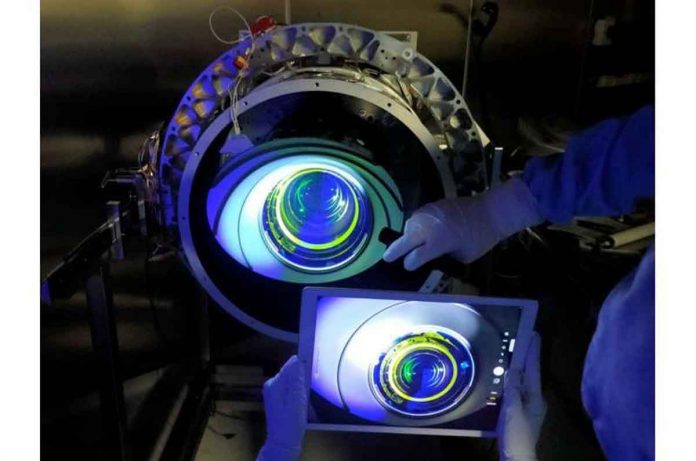The European Space Agency is developing a new exoplanet hunter mission named Plato, which will launch in 2026. Plato’s ability to identify smaller planets in larger orbits than current telescopes is expected to lead to the discovery of Earth-sized planets within the habitable zone, according to astronomers. SRON, the Netherlands Institute of Space Research, is helping with the project by putting Plato’s cameras through their paces in a specially developed space simulator. The prototype has been thoroughly tested by SRON researchers, and all functionalities work as intended. The camera’s structure is currently undergoing a month-long vacuum soak at ESA to test its endurance in space.
Scientists at the SRON Netherlands Institute for Space Research constructed a space simulator and customized it to test Plato in order to imitate the harsh conditions of space. It provides artificial starlight and simulates the environment found in space, with its ultra-low pressure and low temperatures. The camera is moved using a mechanism that still functions in these harsh conditions to allow testing of the entire field of vision. The researchers can determine the direction of the camera’s gaze to within one-millionth of a circle.
Plato’s prototype camera, known as the Engineering Model, was put through a rigorous six-week test program to demonstrate the requisite performance and ensure that it was unaffected by cycling through all potential temperatures. “It turns out that all of the Engineering Model’s features work as planned,” explains project manager Lorenza Ferrari. “This is great news for Plato in general, and it also demonstrates how well our space simulator functions.”
Additional simulators in Paris and Madrid will replicate the test results obtained at SRON on the same camera during the spring and summer, providing the necessary cross-calibration between the three setups. The Flight Model, the ultimate form of the Plato satellite, will have 26 cameras. All of them will be tested in Groningen (SRON), Paris (IAS), and Madrid to stay up with the timeline for the debut in 2026. (INTA). In the fall of this year, SRON will receive the first of eight Flight cameras. It will take till the end of 2023 to test all of them.
The optical bench that will hold the 26 cameras in place is currently undergoing a month-long soak in Europe’s largest thermal vacuum chamber at ESA to ensure its durability in space. “Thermal cycling” is used to see how the optic bench reacts to temperature changes from light to dark, and “thermal balance” is used to see how it maintains its operating temperature in these situations.

